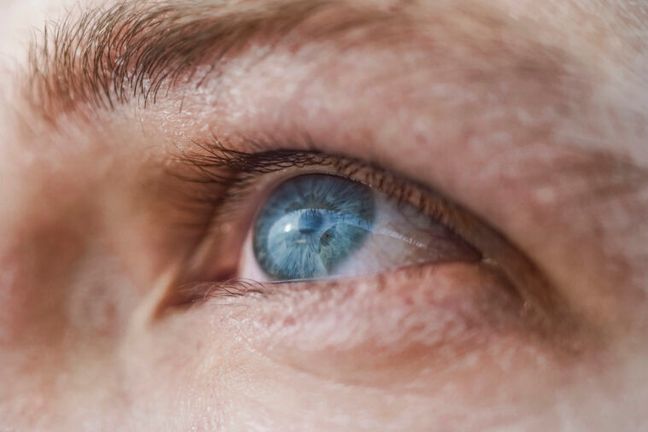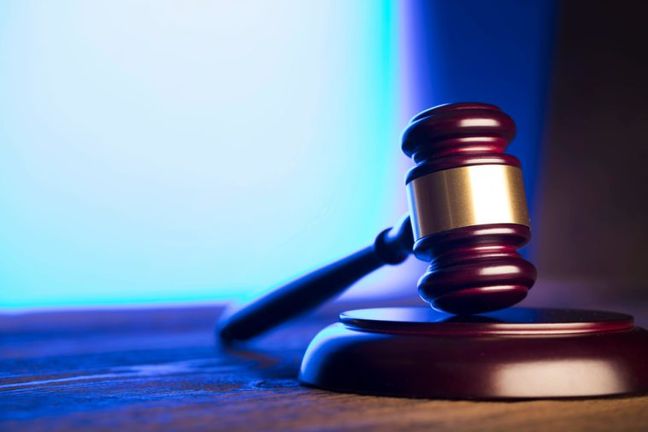In Arizona, courts play a vital role in determining whether expert testimony is relevant, reliable, and based on sufficient facts and data. This role and determination can impact the outcome of a case, especially in medical malpractice claims. In a medical malpractice lawsuit, a plaintiff must prove causal connection between the act or omission and injury through expert testimony, unless the connection is readily apparent to the trier of fact.[i] In Phillips v. Schwartz, the Superior Court’s finding as to plaintiff’s experts’ testimony led the court to find in favor of the defendant.
Factual Background
In September 2017, defendant Jay L. Schwartz performed a bilateral LASIK procedure on plaintiff Melanie Phillips. At the same time, the defendant placed in plaintiff’s right eye a device known as a Raindrop Near Vision Inlay (“Raindrop Inlay”) which is supposed to improve near vision. Prior to the procedure, plaintiff executed an informed consent which warned the Raindrop Inlay can cause permanent glare affecting night driving.
In 2018, plaintiff was experiencing decreased visual acuity due to corneal haze. That March, defendant removed the Raindrop Inlay. In September of 2018, plaintiff sought treatment with other providers to improve her vision. The next month, the United States Food and Drug Administration recalled the Raindrop Inlay because of an increased risk of corneal haze which can cause glare.
Due to the glare and hazy vision, plaintiff eventually stopped driving at night. In 2019 and 2020, she sought treatment with Dr. Robert McCulloch. In 2019, Dr. McCulloch measured plaintiff’s glare in her eyes; the right eye was much worse compared to the left eye. The following year, Dr. McCulloch found plaintiff had the same glare measurement in each eye.
In October 2020, Dr. Todd Lefkowitz performed an independent medical examination on plaintiff. He diagnosed plaintiff with paracentral opacity in the cornea of both eyes. The following year, Dr. McCulloch measured plaintiff’s glare in her eyes again and, once again, the measurements were essentially similar.
Superior Court Lawsuit
Plaintiff eventually sued defendant alleging professional negligence, lack of informed consent, and battery. At her deposition, plaintiff testified she would have declined the Raindrop Inlay implant if she knew about the potential permanent glare.
Dr. Lefkowitz was disclosed as one of plaintiff’s experts. He was critical of defendant for implanting the Raindrop Inlay and not removing it earlier. Dr. Lefkowitz initially testified to a reasonable degree of medical probability if defendant had removed the Raindrop Inlay earlier, plaintiff would not have developed corneal opacities. He also testified the Raindrop Inlay caused corneal damage to plaintiff’s right eye, specifically, opacities in the central corneal surface.
However, Dr. Lefkowitz also testified that he could say to a reasonable degree of medical probability the Raindrop Inlay permanently damaged plaintiff’s right eye. He testified he found some opacity in both eyes. He additionally testified if the LASIK procedure caused some corneal opacity, then that was not evidence of negligence by defendant. According to Dr. Lefkowitz, since the haze was in both eyes, it revealed the haze was more a result of the LASIK surgery than the Raindrop Inlay. He could not quantify the amount of opacity caused by the Raindrop Inlay verse the LASIK Procedure. Dr. Lefkowitz testified the degree of paracentral opacity was fairly minimal. Finally, Dr. Lefkowitz acknowledged he could not state plaintiff’s eye problems may have been different if defendant removed the Raindrop Inlay sooner or never implanted.
After defendant moved for summary judgment, plaintiff provided an undated and unsworn declaration from Dr. Lefkowitz stating that to a reasonable degree of medical probability, the Raindrop Inlay caused plaintiff to suffer opacity in her right cornea and glare. Defendant moved to strike the declaration, but the Superior Court denied the motion.
In addition to the declaration with her response to the motion for summary judgment, plaintiff provided Dr. Lefkowitz’s deposition correction page which stated: 1) to a reasonable degree of medical probability, implantation of the Raindrop Inlay caused plaintiff to suffer glare in her right eye; 2) to a reasonable degree of medical probability, the Raindrop Inlay caused some paracentral opacity in the right cornea; and 3) since the haze in her right eye was grossly more significant than the left, the Raindrop Inlay caused more harm to the right eye.
Eventually the Superior Court granted the motion for summary judgment finding the corneal opacity was minimal, in both eyes, and probably caused by the LASIK procedure.
Court of Appeal
On appeal, plaintiff only argued the Superior Court erred in finding no genuine issue of material fact on the negligence claim.
Pursuant to A.R.S. § 12-561(2), medical malpractice claims include claims for lack of consent. It is on plaintiff to establish through expert testimony the health care provider proximately caused the alleged harm.[ii] In a lack of informed consent, plaintiff must show: 1) she would have declined the treatment with adequate disclosure and 2) the treatment proximately caused harm.[iii]
While the Court of Appeals found plaintiff satisfied the first prong, it affirmed the Superior Court’s ruling due to plaintiff’s failure to meet the second prong. She failed to provide expert testimony that the implantation of the Raindrop Inlay caused her to suffer glare.
Specifically, the Court of Appeals held Dr. McCulloch’s proffered testimony was not consistent with his deposition transcript in which he could not confirm to a reasonable degree of medical probability the Raindrop Inlay caused the fibrotic layer and resultant glare in plaintiff’s right eye. It also found Dr. Lefkowitz’s deposition testimony and deposition changes were conclusory and unreliable.
Under Arizona Rules of Evident 702, the court is the gatekeeper in determining whether expert testimony is relevant, reliable, and based on sufficient facts and data. Upon review of the information in the medical records compared to the testimony of Dr. Lefkowitz, the Court of Appeals agreed with the Superior Court in finding plaintiff suffered from equal bilateral glare. It also found Dr. Lefkowitz could not quantify the amount of opacity caused by the Raindrop Inlay verse the LASIK procedure, and he agreed the degree of paracentral opacity was fairly minimal. Thus, the expert testimony does not provide a basis for genuine issue of material fact to support an essential element of plaintiff’s claim.
TM Takeaway
As defense counsel, the deposition of plaintiff’s expert in cases is key in determining a potential motion for summary judgment and potential exposure evaluations. While the expert’s deposition may not always result in testimony supporting a summary judgment, it can provide information to use at the time of trial to attack the expert’s credibility and bias, which could impact the jury’s view of the case.
Keep Reading
More by this author
Sources
Phillips v. Schwartz, No. 1 CA-CV 22-0487, Arizona Court of Appeals, June 27, 2023
[i] Barrett v. Harris, 207 Ariz. 374, 378 (App. 2004).
[ii] A.R.S. § 12-563(2); Gregg v. Nat’l Med. Health Care Servs., Inc., 145 Ariz. 51, 54 (App. 1985).
[iii] Rice v. Brakel, 233 Ariz. 140, 146 (App. 2013).


 Author: Sitar Bhatt
Author: Sitar Bhatt
 Editor: Ashley Paige Fetyko
Editor: Ashley Paige Fetyko
 Privacy vs. Relevance: How Deep Can Discovery Go in Colorado Lien Cases?
Privacy vs. Relevance: How Deep Can Discovery Go in Colorado Lien Cases?
 Stale Bread: Workers Accuse Panera of Wage Theft
Stale Bread: Workers Accuse Panera of Wage Theft
 Civil Procedure Updates to Know in New York for 2025
Civil Procedure Updates to Know in New York for 2025
 Collaboration Is Key to Preparation in the Weeks Before Trial
Collaboration Is Key to Preparation in the Weeks Before Trial
 But I Didn’t Mean to Do It …
But I Didn’t Mean to Do It …
 Be Bold, Be Bright, But Be Brief…
Be Bold, Be Bright, But Be Brief…
 Taming the Wolf: Florida’s Fifth DCA Holds the Line on Tort Reform
Taming the Wolf: Florida’s Fifth DCA Holds the Line on Tort Reform
 Power of Persuasion
Power of Persuasion
 Ask Atty: William Johnson
Ask Atty: William Johnson
 Arizona Claim Preclusion: A Powerful Tool to Stop the Re-Litigation of a Claim
Arizona Claim Preclusion: A Powerful Tool to Stop the Re-Litigation of a Claim
 Arizona 2021 Legislative Update
Arizona 2021 Legislative Update
 Pima County’s FASTAR Programs Do Not Violate Arizona’s Compulsory Arbitration Statute
Pima County’s FASTAR Programs Do Not Violate Arizona’s Compulsory Arbitration Statute
 New Kids on the Block: Embracing Young Professionals to Defuse Nuclear Verdicts®
New Kids on the Block: Embracing Young Professionals to Defuse Nuclear Verdicts®
 Defusing the Nuclear Bomb: How to Prevent Outsized Verdicts
Defusing the Nuclear Bomb: How to Prevent Outsized Verdicts
 Automatic Attorneys’ Fees from Contractual Arbitration? Not So Fast!
Automatic Attorneys’ Fees from Contractual Arbitration? Not So Fast!
 Suspension of Rules Lifted – Is Arizona Back to Normal?
Suspension of Rules Lifted – Is Arizona Back to Normal?
 What is a School’s Standard of Care? Is it Based on Special Relationships, Public Policy, or Both?
What is a School’s Standard of Care? Is it Based on Special Relationships, Public Policy, or Both?